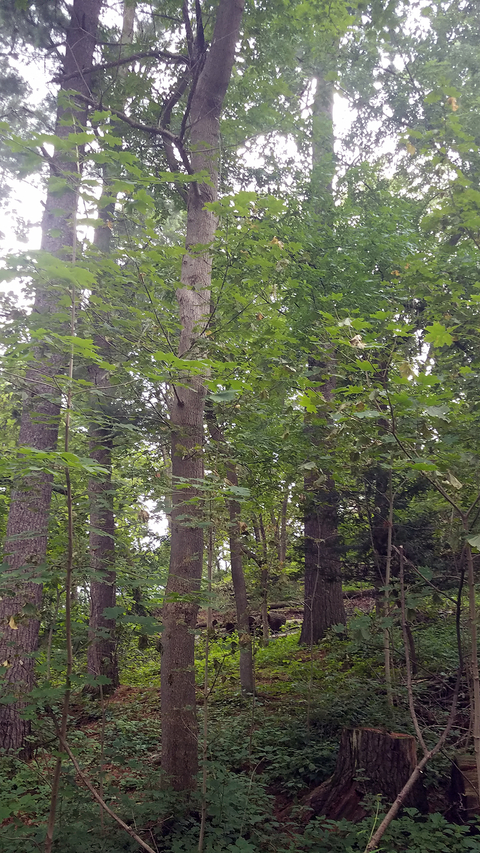Quick facts
Norway maple is an invasive species. It is a non-native popular landscape tree that can spread into native woodlands.
- Norway maple invades woodlands by out-competing sugar maple due to its shade tolerance.
- Wildflower diversity is reduced because it forms a dense canopy.
- Trees are spread by seed.
- Norway maple are often overlooked and confused with sugar maple.
Norway maple is not on any Minnesota control list, but it should be reported when seen in forest areas. The Minnesota Department of Natural Resources provides detailed recommendations for reporting invasive species.
How to identify Norway maple
- Large deciduous tree, up to 60 feet tall when mature, with a dense canopy.
- Has yellow fall foliage.
- Similar in appearance to native sugar maple.
Stem
- Bark generally more regularly grooved than sugar maple.
Branches
- Opposite
Leaves
- Opposite, 5-lobed, coarsely toothed and pointed.
- Generally wider than tall (unlike sugar maple, which is generally taller than wide).
- Broken leaves emit milky sap.
Flowers
- Flat-topped upright cluster, yellowish green, appearing with leaves.
- Blooms in May.
Fruit and seeds
- Widely spreading winged fruits (often called “helicopter seeds”) ripen in autumn.
Reviewed in 2019




